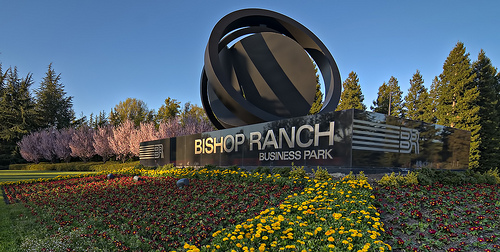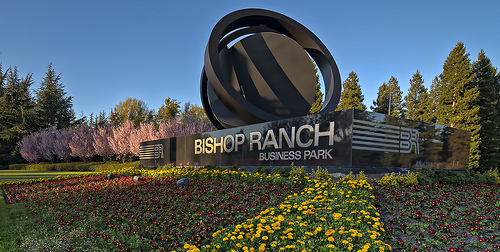 Making a greener office park.Photo: Keith CuddebackFascinating case study in The Atlantic about getting people out of their cars and onto transit for their commute.
Making a greener office park.Photo: Keith CuddebackFascinating case study in The Atlantic about getting people out of their cars and onto transit for their commute.
Lisa Margonelli writes about a program at a suburban California office park that has had huge success in encouraging workers to leave the car at home — by emphasizing the practical and financial advantages of using transit, working with local government to improve bus connections, and creating a culture in which using transit is aspirational — simply a cool thing to do (are you listening, John Kasich?).
One of the things that makes it work is that there is a human being whose job it is to make it happen.
Here’s what Margonelli found in her research:
Last week I went to an exurban office park in San Ramon, California where 33 percent of the park’s 30,000 workers leave their cars at home. Despite the fact that Bishop Ranch is 37 miles from San Francisco, a dozen miles from the nearest BART rail station, and home to Chevron’s corporate offices, its parking lots are surprisingly empty, and it has won many awards for transit. Marci McGuire, the program manager for the Ranch’s Transportation center, describes the attitude at the park as “a culture” where it’s cool to have a bus pass. “When you do it right, it’s like a cult,” she says.
I spent a couple of hours with Marci to find out how she nurtures this cult that gets 10,000 people out of their cars daily. It seemed to me that there were three aspects of the program that operate counter to the current thinking. First, logistically, there are a lot of buses that terminate and originate within a few blocks of all the 30,000 jobs in the park. Secondly, the focus of the transit program is not exclusively environmental, but encompasses health, stress, and financial benefits. Thirdly, though there are 500 businesses at the park, a single office takes pride in its ability to get people on transit, and thus there’s an evangelical zeal to the whole operation. It’s not “just a program” — it’s Marci and her team’s program. …
Marci and her team see leaving the car at home as a lifestyle choice rather than a sacrifice — something you’d read about in Real Simple or Oprah. While Marci tells everyone that one Ranch rider got rid of his car and saved $10,512 a year on his auto lease, maintenance, fuel, and tolls through the transit program, she sees that as the start of a long discussion. “If they’re just looking to save money, it won’t work,” she explains, “If you’re riding because it helps you make several changes in your life, you’ll ride longer. It really matters that people feel they have a choice.”
There’s a lot more to it — the whole article is well worth reading, so read it.
What’s exciting here is the idea that it is possible, despite all the naysaying, to get average suburban Americans thinking differently about transit, even buses. That it is possible to lessen the impact of sprawl development without fancy retrofitting. That the public and private sectors can work together. That it might just be doable to make something better out of what we already have, without resorting to the tired “suburbs vs. cities” trope.
Even more intriguing, to me, is the implication that encouraging people to take transit is a job worth paying somebody like Marci McGuire to do — worth private sector dollars. That getting people on transit has real value for businesses. As Margonelli writes:
While policy pundits like myself gabble on about the need for policy leadership and pricing externalities and the like, Marci works the gig more like an Avon Lady — hand delivering bus passes to offices in the park so she can get to know the receptionists who then refer frustrated auto commuters to her.
Like an Avon Lady. Think about it.



